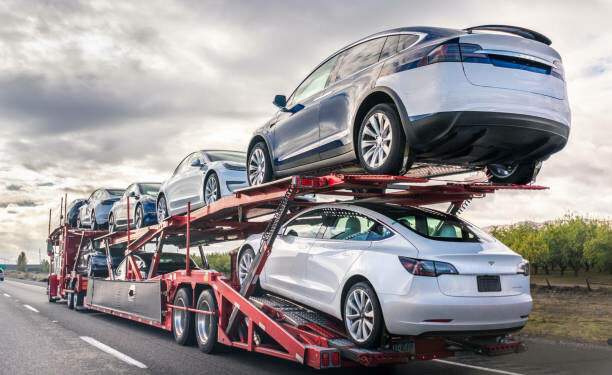The automotive industry is rapidly changing. With auto innovation speeding onto new historical highways, it can be hard to keep up with the technological traffic of today. Because these technologies are changing how drivers interact with their cars, all while providing new opportunities for the industry, it has never been more critical to stay up to date with tech’s effect on the automotive sector.
Technology is reshaping the auto shipping industry
One of the ways that technology is reshaping car transport service is through sustainable fuel sources. The electric car is becoming more popular, which is likely to impact the shipping industry significantly. With more people looking for sustainable transportation options, the industry will need to adapt to provide these cars with the necessary infrastructure.
In addition, autonomous trucks are becoming more prevalent. These trucks can drive themselves, which could revolutionize the shipping industry. With autonomous trucks, the industry will operate more efficiently and reduce costs.
Voice technology
With voice technology, drivers can control many aspects of their car using only their voice. With this unparalleled convenience front and center in the public eye, voice-enabled technology is sure to become an automotive mainstay.
Voice technology is not just for controlling the car; users can also rely on this technology for safety purposes. For example, if an accident occurs, the driver can use voice technology to call for help. Additionally, voice-enabled tech can provide information about the car’s status when the driver cannot look at the dashboard.
Car sharing
With car sharing, drivers can rent cars when they need them, which can be an excellent option for people who only need a car occasionally or don’t want to buy a vehicle. With the automotive industry catching on to the value of car-sharing, industry leaders have followed suit and added car-sharing to their service menu. Note that car-sharing is likely to become even more popular as more buyers become familiar with it.
Cloud-based services
Cloud-based services are becoming more popular, and the automotive industry is starting to take advantage of them. These services allow drivers to access their car’s data from anywhere in the world, which can help diagnose problems with the car or for tracking its location.
In addition, cloud-based services can be used to update the car’s software, which is crucial because it ensures that the vehicle has the latest features and is secure from hackers.
Augmented reality
Augmented reality is a technology that allows you to see digital information overlaid in the real world. This technology is becoming more popular, and it is starting to be used in the automotive industry.
One of the ways that augmented reality is being used in cars is for navigation. With this technology, drivers can see directions overlaid on the road in front of them. It can be helpful when driving in a new city or when trying to find a specific address.
Autonomous cars
Autonomous cars are cars that can drive themselves. There are many benefits to autonomous cars. For example, they can help reduce traffic congestion and pollution. These state-of-the-art vehicles can also improve safety, as they assist drivers in avoiding dangerous situations.
While autonomous cars are still in the development phase and hydroplaning from technical difficulty to technical difficulty that requires troubleshooting before mass release, their popularity will likely continue.
Internet of things
The internet of things is a term that refers to the idea that everything will be connected to the internet. This concept includes both devices like computers and phones, in addition to cars and appliances.
The automotive industry is starting to take advantage of the internet of things. For example, some cars now have apps that allow you to control them from your phone. In the future, more cars will likely have this type of app.
Additionally, the automotive industry is likely to use the internet to track cars’ location and status. This information can improve car maintenance and help drivers find their car if they lose it.
The internet of things is still in its early stages, but the automotive industry is exploring its potential.
Conclusion
As technology rapidly changes, so does the automotive industry. In the 2020s, people can expect to see cars with voice-activated controls, car-sharing services, cloud-based updates, and augmented reality navigation. Autonomous vehicles will also eventually be seen more often on the road. These changes will improve safety, reduce traffic congestion, and make driving more accessible and efficient.






